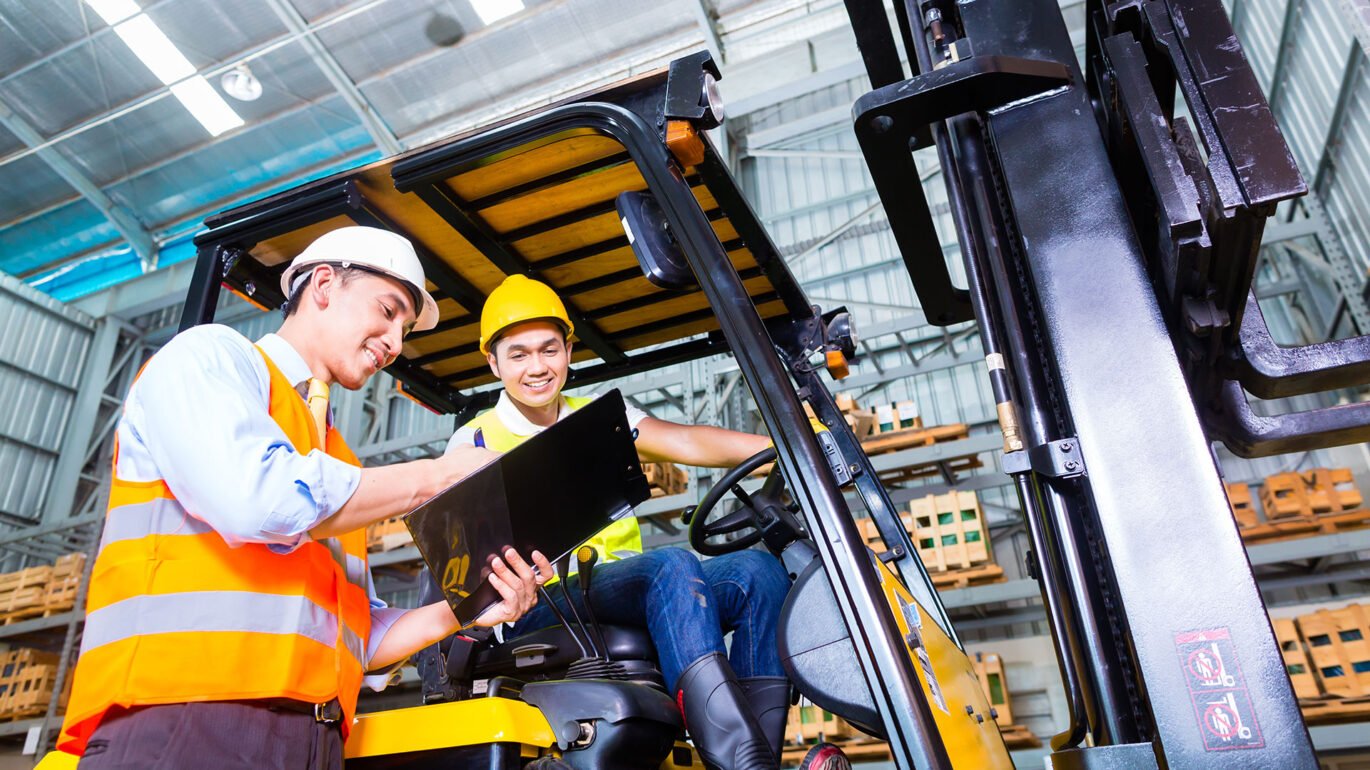Safety around lift trucks has always been a concern in warehouses and similar environments, but it may be an even bigger one now, says WSPS Warehouse and Distribution Specialist Norm Kramer. “Warehouses are going non-stop to meet consumer demands, and they may be relying on new and inexperienced workers due to a labour shortage, which raises red flags.”
He explains that collisions between forklifts and pedestrians are more likely to happen when people are rushed and/or inexperienced. Norm wants to see warehouses take action by putting a traffic management and pedestrian safety plan in place or updating their existing plan.
Right now, the safe movement of mobile equipment around pedestrians is under the microscope as part of the government’s material handling inspection initiative, which runs until September 30. (See A 10-point guide to navigating through the material handling inspection blitz.)
8 steps to improve safety and efficiency in your warehouse
- Understand your hazards. If you haven’t carried out a hazard/risk assessment or refreshed your current one in the last year or two, do it now, says Norm. Map the flow of mobile equipment and pedestrians, identify all potential contact points, and assess contact risks.
Talk to forklift operators, joint health and safety committee members, health and safety staff, supervisors, and pedestrians. Observe employees and operators at work, look at incident reports, and identify root causes of injuries. - Designate pedestrian walkways. Determine the safest places for people to move from point to point. Create pedestrian paths so people move predictably, stay at a distance from mobile equipment, and don’t walk in an operator’s blind spot.
Identify no-pedestrian zones and install traffic barriers and safety gates. In retail outlets, block off aisles when using a lifting device, or schedule the movement of goods for when people are least likely to be around. - Create traffic routes and rules. Develop a traffic system that mimics what’s used on outside roadways (red stop signs, solid lines, black and white crosshatch design for crosswalks.) “It’s much easier for people to understand and adopt,” says Norm. Ensure potential danger areas where pedestrians and vehicles intersect are well marked.
Designate speed limits and rights of way (such as at a four way stop). “At dangerous intersections, both forklift truck operators and pedestrians should stop, look and listen.” Control who can walk through your warehouse or production area. - Practice good housekeeping. Remove hazards that obstruct travel paths or visibility. “Have designated places for storing pallets to reduce blind spots for people and mobile equipment traffic.” Clean up spills promptly to prevent skidding or loss of steering control.
- Maximize awareness of forklift operators and pedestrians. Use adequate lighting, mirrors, horns, alarms, flashing lights, high visibility vests, etc. “Provide warnings that vehicles are approaching with blue lights on top of forklifts and sensors on pedestrians,” suggests Norm.
- Minimize driver and pedestrian distractions from handheld electronic devices, hands-free cell phones, headphones, and food and beverages. Designate areas where they can and can’t be used.
- Ensure forklift truck drivers are qualified. “Do your due diligence,” says Norm. Lift truck operators require special training – both in theory and practical aspects of driving. “Ask for a practical demonstration and if there’s a problem, retrain.”
Also, provide mandatory awareness training so lift truck operators understand the hazards of the job and their role in preventing injuries. - Enforce all rules and procedures. Correct unsafe behaviours, such as an operator not following internal traffic rules. Hold supervisors and managers accountable for enforcing the rules. Recognize and acknowledge operators and pedestrians when they act safely.
How WSPS can help
Consulting
WSPS’ warehousing consultants can help you identify and assess hazards and develop a traffic management and pedestrian safety system tailored to your workplace. Connect with a consultant.
Training
Certification Part Two – Warehousing & Distribution (2 days)
Mandatory Awareness Training (available through the Ministry of Labour, Immigration, Training and Skills Development)
Webinars
Safety Connection: Warehouses – Traffic Management & Pedestrian Safety, September 13
Resources
Warehouses and Distribution Centres Resource Hub
Manage traffic and pedestrian safety (video)
A 10-step guide for material handling
Safety Checklists
Reach Truck/Order Picker Safety
Case Studies
Ladder Safety in the Warehouse
Pedestrian Safety in the Warehouse
The information in this article is accurate as of its publication date.



